Acoustic Profiling of Mysterious Howls in the Pacific Northwest
Using acoustic profiling tools, you can analyze the unique sounds of mysterious howls in the Pacific Northwest. By examining their frequency patterns and comparing them with known wildlife calls, you can identify or differentiate unexplained sounds. Advanced technologies like spectral analysis and machine learning help uncover distinctive signatures, revealing whether these noises come from animals, environmental phenomena, or something more mysterious. Keep exploring to discover how these techniques uncover the secrets hidden in the soundscape.
Key TakeawaysSpectral analysis visualizes frequency signatures to differentiate mysterious howls from known wildlife sounds in the Pacific Northwest.Machine learning algorithms classify and identify patterns in recordings, aiding in distinguishing supernatural or unidentified sources.Strategic sensor placement captures elusive or haunting sounds amidst dense forests and rugged terrains.Cross-referencing with sound libraries helps determine if howls originate from local fauna or unknown phenomena.Acoustic modeling enhances understanding of how mysterious sounds propagate through varied landscapes and atmospheric conditions.The Unique Soundscape of the Pacific Northwest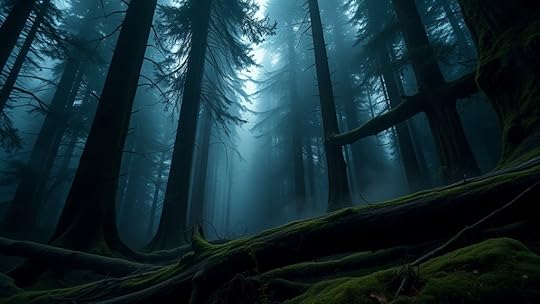
The Pacific Northwest boasts a distinctive soundscape shaped by its diverse natural environment. You might imagine echoes of mythical creatures lurking in the forests or hear distant calls that have persisted through time. Historical recordings reveal a rich tapestry of sounds, from native bird calls to the mysterious howls that still puzzle researchers today. These recordings capture the region’s haunting melodies, blending natural and possibly supernatural elements. The landscape’s dense woods, rugged coastlines, and mountain ranges create an acoustical environment that amplifies these sounds, making them feel larger than life. Whether real or legend, the sounds of the Pacific Northwest evoke a sense of mystery and intrigue, inviting you to explore further and listen closely to its ancient, enthralling soundscape.
Techniques in Acoustic Data Collection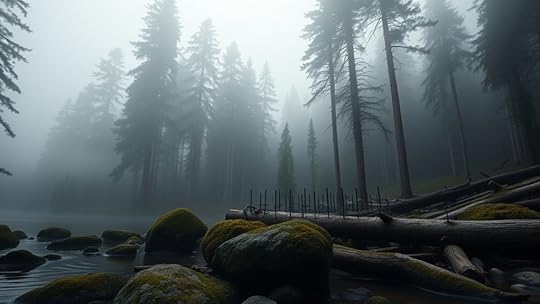
To gather accurate sound data, you need to carefully select your equipment and set up sensors in strategic locations. Once collected, analyzing the audio requires effective methods to distinguish notable patterns from background noise. Understanding these techniques helps you capture clearer recordings and interpret mysterious howls more effectively.
Equipment and Sensor SetupSetting up effective acoustic monitoring in the Pacific Northwest requires selecting the right equipment and sensors tailored to capture the elusive howls. You’ll want high-quality microphones with wide frequency ranges and low noise levels. Proper sensor calibration guarantees accurate recordings and reliable data. Use durable, weather-resistant enclosures to safeguard equipment from the region’s elements. Adequate data storage options, like large-capacity SD cards or external drives, are essential for handling continuous recordings. To optimize setup, consider the following:
Equipment TypePurposeKey FeaturesMicrophonesCapture high-fidelity soundsWide frequency response, low noiseData LoggersRecord and store dataLarge storage capacityPower SuppliesSustain long-term monitoringSolar panels, batteriesEnclosuresProtect equipmentWeather-resistant, durableCalibration ToolsGuarantee sensor accuracyCalibration software or devicesData Analysis MethodsAnalyzing acoustic data from the Pacific Northwest’s mysterious howls involves applying a variety of techniques designed to extract meaningful patterns and identify the sources. You’ll start by using spectral analysis to visualize sound frequencies, helping you distinguish wildlife communication signals from ambient noise. Time-domain analysis allows you to examine how sounds evolve over time, revealing behavioral patterns. Machine learning algorithms can classify different call types, assisting in identifying species or sources. Cross-referencing recordings with known wildlife communication helps confirm the origins of the howls. This process supports acoustic ecology by understanding soundscapes and ecosystem health. By combining these methods, you gain insights into the acoustic environment, revealing the roles of various animals and environmental factors behind the mysterious sounds.
Analyzing Frequency and Pattern Signatures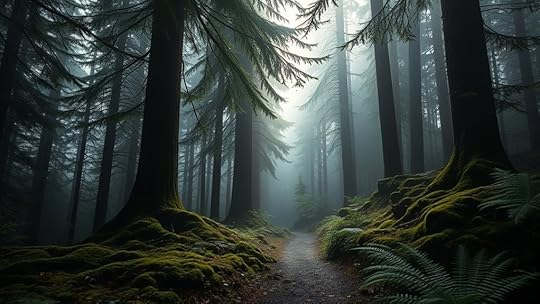
To identify mysterious howls, you focus on analyzing their frequency spectrum and pattern signatures. These techniques help distinguish different sources and behaviors behind the sounds. By applying pattern recognition, you can compare recordings and uncover unique acoustic signatures.
Frequency Spectrum AnalysisBy examining the frequency spectrum of the mysterious howls, researchers can identify distinct signature patterns that differentiate these sounds from other natural or human-made noises. This process reveals the spectral fingerprints unique to each call, allowing for precise comparison across recordings. You’ll notice how these ethereal melodies often contain specific frequency ranges that stand out, hinting at their possible origin or purpose. Analyzing the spectral content helps isolate key features like pitch, harmonics, and tonal quality, providing insight into the sound’s structure. This detailed approach enables you to distinguish between different sources and identify consistent patterns that may be linked to a particular creature or phenomenon. Ultimately, frequency spectrum analysis serves as a critical foundation for understanding the mysterious howls’ acoustic signatures.
Pattern Recognition TechniquesPattern recognition techniques play an essential role in identifying and classifying the mysterious howls by examining their frequency and signature patterns. You can utilize vocal pattern recognition to compare sound recordings, highlighting unique features in each howl. This approach helps differentiate sounds by their sound signature, revealing subtle variations that distinguish one creature or source from another. By analyzing these patterns, you can detect consistent traits such as pitch, tone, and rhythm. Sound signature differentiation allows you to filter out background noise and focus on distinctive acoustic signatures. Implementing algorithms for pattern recognition streamlines the process, enabling rapid and accurate identification. Ultimately, these techniques help you uncover clues about the origin of the howls and deepen your understanding of this mysterious phenomenon.
Differentiating Known From Unknown Sounds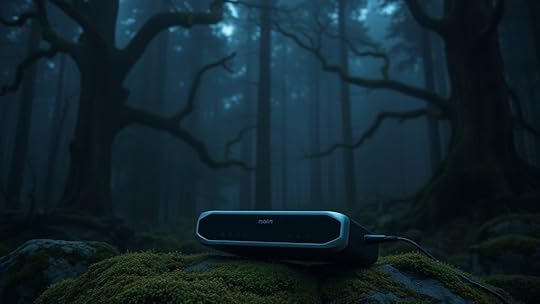
Distinguishing known sounds from unknown ones requires careful analysis of acoustic features and contextual clues. Sound classification helps you identify familiar patterns, like calls from local wildlife or human activity. To isolate these, noise filtering becomes essential—removing background noise that could mask or distort the sounds. By focusing on specific frequency ranges and temporal patterns, you can differentiate between common, predictable noises and unfamiliar, potentially mysterious ones. Recognizing the characteristics of known sounds allows you to flag anomalies for further investigation. This process relies on comparing recordings to established sound libraries and understanding environmental context. Accurate differentiation is vital in narrowing down the source of mysterious howls and avoiding misinterpretation caused by overlapping noises.
Case Studies of Mysterious Howls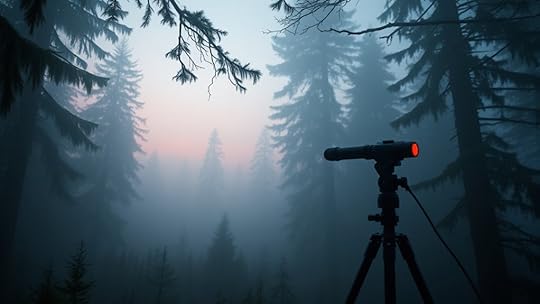
Several documented cases of mysterious howls in the Pacific Northwest have puzzled researchers and local residents alike. One notable case involved a series of eerie calls heard near ancient forests, sparking speculation about mythical creatures from local folklore legends. Witnesses described the sounds as haunting and unearthly, fueling legends of forest spirits or cryptid beasts, like the Sasquatch or other mythical entities. Experts struggled to identify the source, as the recordings showed unusual frequency patterns that didn’t match known animals. These cases often become part of local stories, blending fact and myth. While some dismiss them as natural phenomena, others believe they hint at mysterious beings rooted deep in regional folklore legends. These cases continue to inspire curiosity and debate among researchers and enthusiasts.
Technological Innovations in Sound Analysis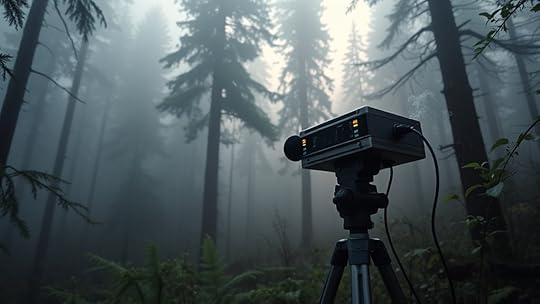
Advancements in sound analysis technology have revolutionized how you investigate mysterious noises like the haunting howls of the Pacific Northwest. You now utilize bioacoustic modeling to identify species-specific calls and classify sounds more accurately. Machine learning algorithms automatically analyze vast audio data, detecting patterns humans might miss. These innovations enable real-time monitoring and precise sound characterization. You can visualize the relationship between methods, applications, and outcomes in this table:
TechniqueApplicationBenefitBioacoustic modelingSpecies identificationAccurate call classificationMachine learning algorithmsAutomated sound pattern detectionIncreased analysis speedDeep neural networksComplex sound analysisEnhanced feature extractionReal-time processingField monitoringImmediate data insightsData visualization toolsPattern recognitionBetter understanding of soundscapeImplications for Wildlife and Ecosystem Research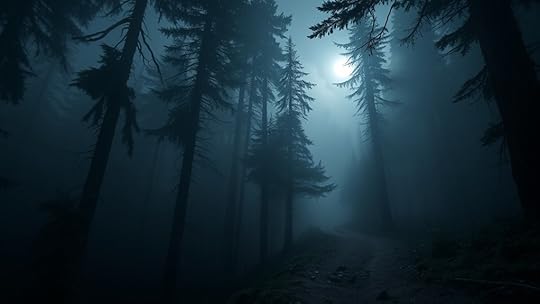
The integration of advanced sound analysis technologies offers transformative potential for wildlife and ecosystem research. By analyzing mysterious howls, you can gain insights into animal behaviors and communication patterns, enriching your understanding of behavioral ecology. Precise sound propagation models help determine how sounds travel through various terrains and atmospheric conditions, revealing how animals might coordinate across distances. This approach enables you to monitor populations non-invasively, track migration routes, and identify species based solely on their calls. These insights can inform conservation strategies, habitat management, and ecosystem health assessments. As you refine acoustic profiling, you’ll better understand the complex interactions within ecosystems, helping you predict responses to environmental changes and human impacts. Ultimately, this research deepens your grasp of the intricate links between species and their habitats.
Frequently Asked QuestionsCould These Mysterious Howls Be Linked to Human Activities or Artifacts?You might wonder if these mysterious howls are connected to human activities or artifacts. It’s possible, as urban noise and mechanical sources like vehicles, construction, or industrial equipment can create sounds that resemble howls. Sometimes, these noises bounce off terrain or structures, making them seem eerie or unexplainable. So, investigating local human activities and mechanical sources could help identify whether they’re behind these strange sounds.
Are There Any Historical Reports of Similar Sounds Predating Modern Recordings?They say history repeats itself, and your question about ancient echoes is no exception. You might find that historical reports of similar sounds exist, often woven into ancient legends of mysterious creatures or spirits. These sounds, documented long before modern recordings, suggest that such phenomena have long captivated human imagination. Delving into old tales could reveal that these mysterious howls have been part of the region’s cultural fabric for generations.
How Might Climate Change Impact the Frequency of These Elusive Sounds?Climate change could increase the frequency of these mysterious sounds by amplifying drought effects, which stress local ecosystems. As water sources dwindle, animals may alter migration patterns or become more vocal in distress, leading to more frequent or intense howls. You might notice these sounds happening more often as wildlife responds to habitat changes, making it essential to monitor environmental shifts to understand their impact on animal behavior and communication.
Can Acoustic Profiling Conclusively Identify New or Hybrid Species?You might wonder if acoustic profiling can conclusively identify new or hybrid species. While it provides valuable data, it often requires supporting evidence like genetic analysis to confirm findings. By examining behavioral patterns alongside acoustic signatures, you increase accuracy. Ultimately, combining these methods helps you distinguish between known species, hybrids, and potentially new species, giving you a clearer understanding of the biodiversity you’re studying.
What Are the Potential Cultural or Mythological Interpretations of These Sounds?You might see these mysterious sounds as echoes of Indigenous legends, where mythical creatures like the Thunderbird or Wendigo are believed to produce such noises. These interpretations shape local culture, fueling stories that connect nature with spirituality. The sounds could symbolize spiritual messages or warnings, reinforcing cultural beliefs. You’ll find that many communities view these howls as part of their mythological heritage, blending natural phenomena with folklore and tradition.
ConclusionBy diving into these mysterious howls, you’re exploring a soundscape as complex as a tangled forest. As technology advances, you get closer to uncovering whether these calls are from elusive wildlife or something even stranger. Each discovery is like opening a new leaf in a vast, hidden book of nature’s secrets. Your efforts help protect ecosystems and deepen understanding, turning the unknown into the known—like shining a flashlight through the darkness of the Pacific Northwest.



